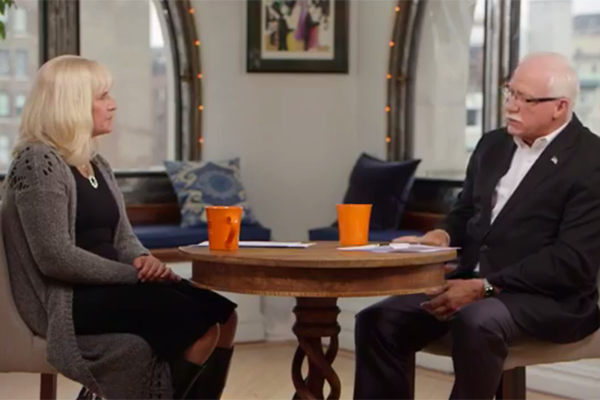Diseases and conditions Diet and nutrition Diet and meal planning Hyperkalemia Vitamins, nutrients, minerals, and supplements DASH diet Potassium
October 11, 2017
<div><em style="box-sizing: inherit; color: rgb(59, 68, 79); font-family: "Open Sans", "Helvetica Neue", Helvetica, sans-serif; font-size: 16px;">Say Goodbye to High Blood Potassium With These Dietitian-Approved Tips</em></div>
Say Goodbye to High Blood Potassium With These Dietitian-Approved Tips
Whether you are a dialysis patient or just watching your diet, you know that you are what you eat. And while fruits and veggies are healthy choices, high-potassium foods are important to monitor when living with kidney disease. We sat down with Dr. Leslie Spry (MD, Dialysis Center of Lincoln of Lincoln, NE) and Dr. Laura Byham-Gray (PHD, RDN, FNKF, Rutgers University) for a Facebook Live event to get the skinny on how to keep a kidney-healthy (and safe!) diet.
Hyperkalemia: What we mean when we talk about high blood potassium
Dr. Spry set the stage with an explanation of hyperkalemia, or high blood potassium. A natural and important chemical element, potassium is in many foods we eat, such as potatoes and bananas, but there can be too much of a good thing when it comes to potassium intake. As Dr. Spry, a self-described “Kidney Guy” put it, “Potassium is an electrolyte in your blood and is intimately involved in the electricity that happens inside your body. Any change in blood potassium can lead to complications such as heart problems, even stoppage on rare occasion, and muscle weakness and cramps.” High potassium in your blood, especially as a kidney patient, can have serious effects on your body, particularly your muscles, including your heart muscle. So while it isn’t necessary to put away the Bananagrams, it is important to control potassium intake and take a closer look at the foods you consume.
So, what should I eat to manage my potassium intake?
Dr. Byham-Gray encourages patients, especially those in the early stages of kidney disease, to follow a DASH diet, which is healthy for everyone and stands for “Dietary Approaches to Stop Hypertension.” The main idea is to load up on fruits and vegetables and limit animal proteins. But since fruits and veggies are often high in potassium, it is important to know the right portion sizes of foods that you’d like to include in your diet so that you won’t exceed the amount of potassium that’s safe for you. Dr. Byham-Gray makes sure to note that everyone’s nutritional needs are different – it depends on what stage of kidney disease that you’re at – so it is essential to have an open conversation with your nephrologist, know your numbers, and make a diet plan with a registered dietitian/nutritionist (RDN) that works for you!
How do I find foods that I actually want to eat while watching my potassium?
The first question Dr. Byham-Gray asks her patients is “what foods do you enjoy in your diet?” The goal, she says, is to not take the joy out of eating. Since what may work for one patient's needs (or palette) may not work for another, Dr. Byham-Gray suggests working with a dietitian to assess your food history, patterns, and problem areas – as well as your preferences – to come up with a healthy, tasty food plan. And with limits, come creativity! Dr. Byham-Gray works with her patients to experiment with herbs, seasonings, and different styles of cooking in order to bring new flavors to life!
What do drugs have to do with it?
As with most health conditions, medicine often plays a role. Medications commonly given to people with kidney disease, such as drugs used to treat high blood pressure, beta-blockers and ACE inhibitors as well as some antibiotics and non-steroidal agents like Ibuprofen, Aleve, and Advil, can all add to high blood potassium. Since many patients with CKD are also dealing with diabetes, Dr. Spry emphasized the importance of having a cross-condition team of experts working to find the right mix so that diet and drugs can work together for maximum effect.
Once I’ve reviewed my diet plan and my medication list with my doctors, what’s next?
If you’re still having trouble keeping your blood potassium at safe levels, you can work with your doctor to determine other treatment options. For some patients, high blood potassium can be managed with water pills or other diuretics that cause the kidneys to waste potassium or even a familiar household item, baking soda. If that doesn’t work, your doctor may prescribe a potassium binder that can help to lower blood potassium levels. The treatment of last resort for patients who have high potassium is always dialysis – dialysis is a big step and may require additional restrictions of potassium in the diet, but in some cases, it may be necessary.
For more information on potassium, hyperkalemia, your kidneys, and healthy ways to manage them all - check out the full Facebook Live with Dr. Spry and Dr. Byham-Gray.


















